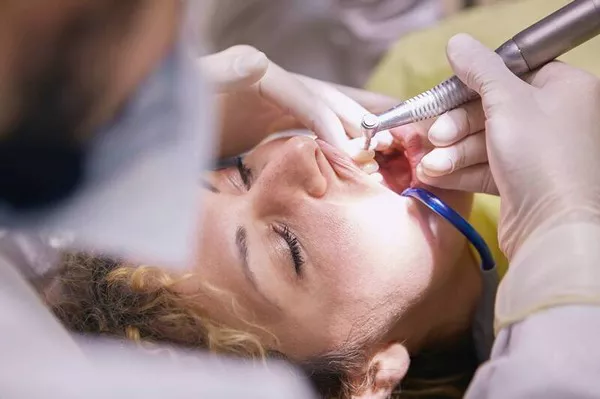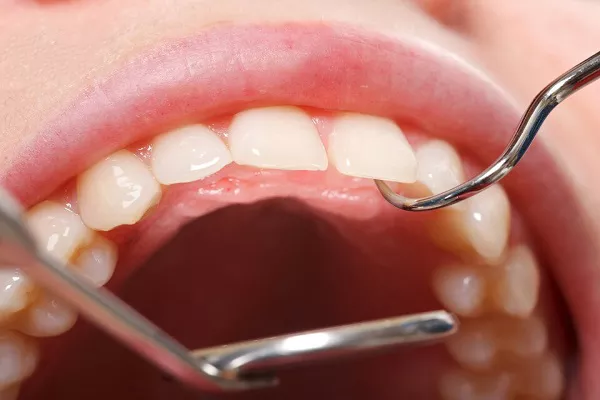Scaling, a common dental procedure, is performed to remove tartar and plaque buildup from the teeth and gums. While this treatment is essential for maintaining good oral health, many patients wonder how long it takes for their gums to heal after scaling. In this comprehensive guide, we will explore the healing process of gums following scaling, what to expect during recovery, and how to promote optimal gum health.
Understanding the Scaling Procedure
Scaling, also known as dental scaling or deep cleaning, is a non-surgical dental procedure that involves the removal of plaque and tartar (calculus) from the surfaces of teeth, especially below the gumline. It is typically performed by a dental hygienist or dentist and is a crucial step in preventing and treating gum disease.
The Scaling Process:
Assessment: Your dentist or hygienist will evaluate the extent of plaque and tartar buildup, often using a dental probe to measure the depth of gum pockets.
Scaling: The dental professional will use specialized tools to carefully remove the plaque and tartar from the tooth surfaces and below the gumline. This process may require scaling all four quadrants of the mouth over multiple appointments.
Root Planing: After scaling, root planing is often performed to smooth the root surfaces of the teeth. This helps prevent the reattachment of bacteria and promotes the healing of gum tissues.
Oral Care Instructions: Following the procedure, you will receive instructions on maintaining good oral hygiene, including regular brushing, flossing, and any prescribed antimicrobial rinses.
How Long Does It Take for Gums to Heal After Scaling?
The healing time for gums after scaling can vary depending on several factors, including the extent of gum disease, your overall oral health, and your commitment to post-scaling oral care. Here is a general timeline of what to expect:
Immediate Recovery: After scaling, you may experience some minor discomfort, swelling, and bleeding from the treated areas. These symptoms are typically temporary and may last a few days to a week.
Initial Healing (1-2 Weeks): The initial healing phase begins shortly after scaling. During this time, your gums may continue to heal, and any residual bleeding or sensitivity should gradually subside.
Continued Healing (2-6 Weeks): Over the next several weeks, your gums will continue to heal and reattach to the teeth. It is essential to adhere to your dentist’s post-scaling instructions diligently during this period.
Long-Term Healing (Several Months): The full healing process can take several months, during which your gums should gradually return to a healthy state. The reduction in gum pocket depth and improved gum attachment to the teeth are positive signs of long-term healing.
Maintenance (Ongoing): To ensure continued gum health, it is crucial to maintain a consistent oral care routine and attend regular dental checkups and cleanings. This ongoing care is essential for preventing the recurrence of gum disease.
Factors Affecting Healing Time
Several factors can influence the healing time for gums after scaling:
Severity of Gum Disease: The extent of gum disease at the time of scaling can impact healing time. More advanced cases may require more extended healing periods.
Oral Hygiene Habits: How well you follow your dentist’s post-scaling instructions and maintain good oral hygiene practices at home can significantly influence the healing process.
Overall Health: Your general health and immune system can affect how quickly your body heals. A healthy lifestyle can support optimal healing.
Dental Follow-Up: Regular follow-up appointments with your dentist or hygienist are essential to monitor the healing process and address any concerns promptly.
Promoting Gum Healing After Scaling
To facilitate optimal gum healing after scaling, consider the following tips:
Follow Post-Scaling Instructions: Adhere to your dentist’s or hygienist’s post-scaling instructions meticulously, including prescribed oral rinses and medications.
Maintain Excellent Oral Hygiene: Brush your teeth at least twice a day, floss daily, and use any recommended interdental devices to keep the treated areas clean.
Attend Regular Dental Checkups: Continue to visit your dentist for routine checkups and cleanings as advised.
Healthy Lifestyle: Eat a balanced diet, exercise regularly, manage stress, and avoid tobacco products, as these factors can influence gum health.
Stay Hydrated: Drinking plenty of water can help maintain oral moisture and support the healing process.
Conclusion
Gum healing after scaling is a gradual process that depends on various factors, including the extent of gum disease and your commitment to post-scaling oral care. While some immediate discomfort and bleeding are normal, following your dentist’s instructions and maintaining excellent oral hygiene are key to a successful and timely recovery. With proper care and regular dental checkups, your gums can heal, and you can enjoy improved oral health and a confident smile.
Related Topics:





























